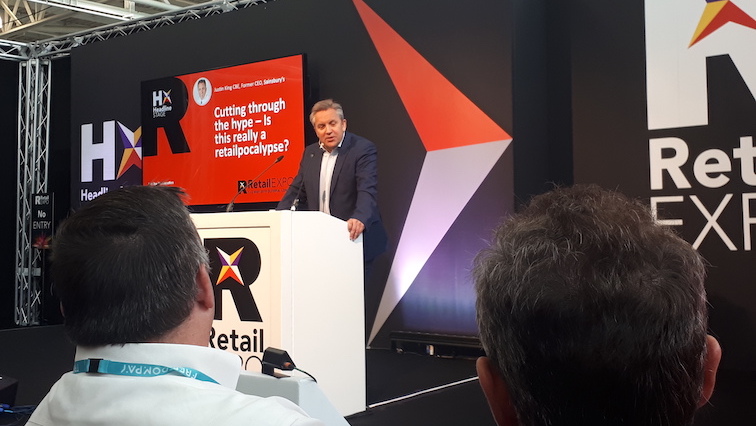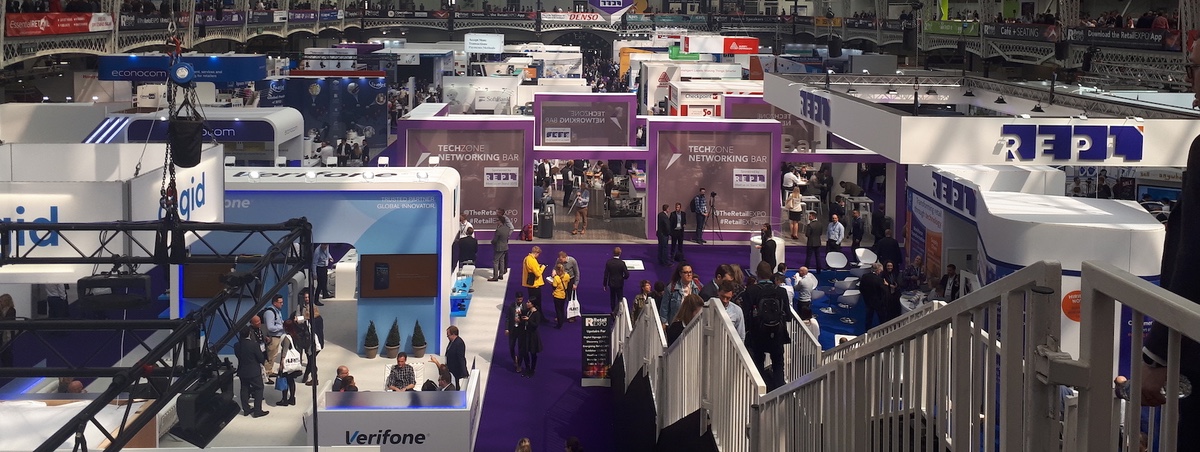If you were unable to make the yearly Retail Expo or couldn’t fit in all the talks, here are the best bits over two days.
Top 3 Takeaways from the Retail Expo 2019
Walking into Kensington Olympia faced with a myriad of stalls to explore can feel overwhelming, but dig down into the fantastic speaker line up and you’ll come away with some inspirational nuggets.
What really struck me this year was an entire floor dedicated to digital signage which wasn’t there last year. You could say that this supports the common thread in retail publications the world over that retailers are having to step up their in-store game. However, it’s important not to get lulled in by gadgets, implementing tech for tech’s sake. As Kate Hardcastle said in her talk about Millenials, “Make tech robust and easy to use - consider the benefits it presents to the customer”. (side note - I’d love to know if there’s a really strong case for digital signage in stores.)

Here are 3 quickfire takeaways from the event (not including the mind-blowing fact that the average Missguided customer scrolls up to 10 miles a year!):
Retailers are having to adapt quicker than ever
Neil Phillips, Head of Digital Retail Operations at M&S (alongside Doddle’s CTO Gary O’Conner) gave us some insight into how the longstanding retailer has had to quickly adapt to the rise in click and collect. 75% of orders are collected in stores which has been a challenge given that most M&S stores were not built with storage capability in mind. In addition, collection points used to be far away to try and increase customer basket size, but now convenience is key, the route to collection points is designed to be accessed as quickly as possible. As Andy Murray, Chief Customer Officer, ASDA stated in relation to the customer, “Saving time is just as important as saving money”.

When talking about speed, Amazon is one of the first businesses to spring to mind. Miya Knights Co-author, Amazon: How the World’s Most Relentless Retailer will Continue to Revolutionize Commerce, and Head of Industry Insight, Eagle Eye Solutions argues that “Amazon is not killing the high street - it’s killing mediocre retail”. With Amazon consistently winning on speed and convenience, choice and relevance, and transparency and provenance, what can retailers do to differentiate themselves? Her top tips were:
- Focus on how you sell what you sell
- Understand who you are selling to - use that customer data
- Update when and where you sell
- Refine what you sell
The high street is still relevant and it’s very much alive and kicking
Justin King CBE, Former CEO, Sainsbury’s began day 1 making it very clear that the so-called ‘retail apocalypse’ was far from the truth. He stated that over the years retailers have managed to reinvent themselves time and time again through challenging backdrops and today’s climate is no different. I liked that he preferred the phrase ‘retail locations’ to ‘high street’ (the latter is too limiting) and agreed with his prediction that store growth will largely remain flat with a lack of distinction between what in-store and online transactions are.

Helen Dickinson OBE, Chief Executive, British Retail Consortium explained that at the BRC they spend a lot of time trying to dispel the myth of the death of the high street. She reinforced the fact that technology is changing the way people shop, so we need to think about reimagining our existing spaces as opposed to trying to save what we had in the past. She also commented on the shift in the relationship between tenants and landlords (particularly around shorter leases and flexibility with pop-up shops), and gave a nod to collaboration, stating that “It’s not about competing with the guy next door, it’s about working with them”. In her view “strong local leadership” is the differentiating factor that will give a strong foundation for retail to surge ahead.
“The customer journey looks like spaghetti” (or cooked spaghetti I should say)
Essentially, another way for Alex Sbardella, SVP Global Innovation, GDR Creative Intelligence to explain that the customer journey is anything but linear. He stressed the importance of knowing your customer better and argued that “The modern world is about offering customers choice - if you don’t, someone else will”.
Alex stated that in the face of the phenomenal change we are experiencing, it’s more important than ever to get on board with tech trends that actually make a difference, but acknowledged that it is becoming extremely difficult to make decisions about the future.

Some examples he gave of good innovation from retailers included:
- Nike’s House of Innovation can be controlled entirely through the app for a seamless experience - or completely offline
- Ecommerce platform Tmall has created technology allowing shoppers to sample products in the loo
- Nordstrom’s small format department store concept holds no stock, focusing exclusively on click and collect and services
In Summary…
Consumers have the utmost power, dictating not only trends but also the technology that retailers need to use to meet growing expectations. I couldn’t agree more with Kate Hardcastle who said, “We have data beyond our fingertips, but we need structure and focus”.
Despite the challenges the retail industry is currently facing, data is what will make all these exceptional customer experiences possible, and will form the foundation to transform what we know the high street to be today.

